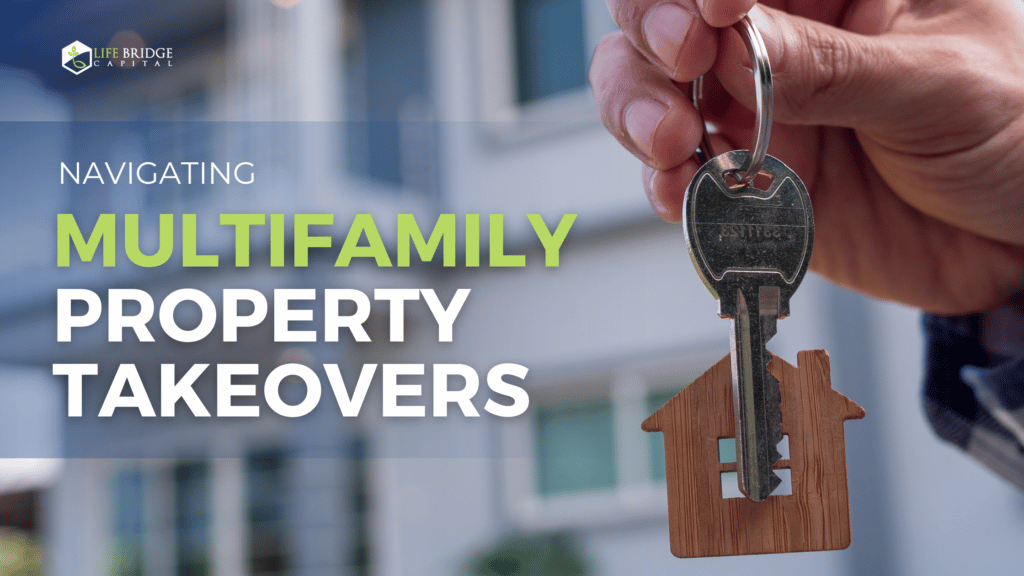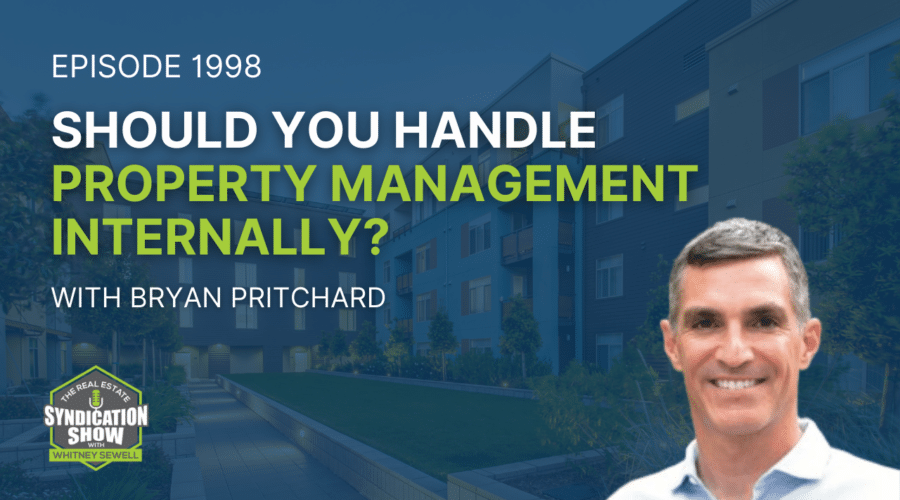
Once you and a seller have signed the paperwork, closed the deal, and you get the keys to your new multifamily property, there’s that overwhelming sense of joy and relief. Joy from the successful transaction and relief from all the hard work of finding the deal, doing due diligence, underwriting, finding a lender, and getting that loan qualification. But not for long though. This time, you’ll be facing a new challenge – taking over the management from the previous manager/owner and making this transition as smooth as possible.
As operators, we want to make sure that our property management transition is an easy one. We were fortunate that in one of our many interviews with renowned real estate entrepreneur, author, and motivational speaker Vinney Chopra, he shared strategies to make the takeover process as seamless and trouble-free as possible. Read on and learn some insider tips not only about the takeover process but also on ways to improve your tenant retention rate and increase the value of your property. You may click here to listen to our full conversation.
Preparing for takeover
Vinney suggests that preparation for takeover begins a month before the closing of the deal. “We need to start thinking about what we are going to do that day of the takeover because you got to make decisions beforehand,” advises Vinney.
The due diligence process will most likely cover all aspects of property management and related documentation. However, Vinney highlighted the following concerns that must be discussed with the seller before closing:
- Staffing
“Ask the seller if they’re going to take their employees with them to another property or if they would be willing for us to interview them and then see if they would like to join us. Your team is your biggest asset ao you want to have a whole crew of experienced people,” says Vinney.
One of the most vital pieces of a takeover is having the right property management personnel, and that includes determining whether onsite staff should be kept – requiring immediate interviews for staff members willing to stay. Another option is to bring in your own property management company to completely take over the operations. Ideally, new managers will want to keep some key employees that already have the work skills and knowledge of the property and its tenants during the transition, and in some cases, offer them permanent jobs.
- Leases and Contracts
There are several service contracts (lawn care and landscaping, laundry facilities, office equipment or machines, pest control, etc. ) that must be identified during the due diligence process as these will be transferred to the new owner.
As for utilities – “The day we close the deal and it’s recorded, the seller is going to take out the utilities – the water, trash, gas, and electrical connection. So, we need to be ready to go to the city offices and change those in the new company’s name,” says Vinney. He reminds that registration for utilities will require deposits ranging from $5,000 to as high as $20,000. To save money and avoid paying these hefty amounts, Vinney recommends purchasing and using a surety bond to settle the fees, if the city office allows it.
- Property Management Software
Decide on software that you will use even before the takeover. With good property management software, you can screen and manage tenants, respond to maintenance requests, and account for all of the property’s expenses and revenue. Recently, many software companies have released new customizable products that will serve you best based on your portfolio size, building and tenant type, and budget.
More importantly, on day one, your system should be running and you should have access to all the residents’ names, contact numbers, addresses, and other relevant information. “The seller usually is going to take their computers with them so you have to have your own computers ready. You want to get cutting-edge software, cutting-edge faster computers to increase productivity and efficiency,” advises Vinney.
- Property List
The seller and the broker will give you a property list that will identify the various tangible properties used in business operations that will be turned over to you. The list may include technical equipment, office furniture, warehouse inventory, furnishing and fixtures of the model unit, and other items that will be staying in the property.
- Estoppel Certificate
An estoppel certificate is a legal document whereby a tenant declares and certifies certain details about a rental agreement to be true. Typically, the estoppel certificate relates to the tenant’s relationship with the landlord and the terms and status of the lease such as commencement date, rent amount, defaults, deposits, renewals, or extensions. In addition to giving the new owner accurate information about the lease, an estoppel certificate gives assurance that the tenant at a later date will not make claims that are inconsistent with the statements contained in the certificate. “It’s another way to double-check the specific tenant lease agreements because when we do the financial due diligence, it’s only looking at the totals, only the lease amounts,” advises Vinney.
Takeover: Phase 1 (Transition)
On day one, Vinney recommends that the following tasks be done or at least started.
- Ensure that your property management team members are in place and up to the task to deal with many questions from tenants.
- Ensure that your property management system is up and running so that service to tenants and business operations are uninterrupted.
- Send the Estoppel letter/certificates to tenants.
- Conduct physical inventory of items in the Property List to verify the existence, location, status, and condition of assets, and to verify the accuracy of records.
Takeover: Phase 2 (Value-Add)
During the value-add phase, we begin to execute the business plan. We’re aiming to increase our net operating income and to eventually increase the value of the property. This is done by improving tenant services and property operations, upgrading the property by making physical improvements to the asset, and marketing the property to bring up occupancy rate. Significant improvements will allow you to command higher rents and help you achieve your NOI goals.
Here are some ways that Vinney adds value to a newly-acquired property.
- Property Improvements
What brings immediate value in the eyes of residents and the rest of the community is exterior upgrades. For Vinney, instant appeal boosts come from new signages, installing statement flags on poles, enhanced curb appeal, pavement upgrades, and parking lot and garage improvements. Setting up new computers for the residents’ media center and fixing the leasing office have also gained glowing reviews from residents, says Vinney.
“Cafes are big in our communities so we built them, brought in coffee machines, offered cookies, and have events every month. They are a hit among residents,” says Vinney. He adds that a property will also often be favored if it promotes pet-friendly policies while incorporating pet-oriented services like pet waste stations. Upgrading playground equipment also often gains positive feedback from the community.
Next to exterior and amenities makeovers are the apartment unit renovations. Depending on your business plan, this may include new kitchens, baths, shelving and cabinets, flooring, and other fixtures. Ultimately, these improvements could allow you to raise the rent or increase occupancy and should generate positive returns on the invested capital and improve the property’s cash flow.
- Boost Rent Collection
“In property management, there are three things – rent collections, retention, and responsiveness. Rent collection and retention of tenants are built on our responsiveness to tenants’ needs, how we take care of them. Better service reduces delinquency of rent payments and increases collection,” says Vinney.
Vinney further shares some tips on increasing rent collection. “In our communities, rents are due by the 3rd of the month. So, text reminders are sent out at the end of the month because we’d like them to start paying early. Those who pay earlier than the 1st are entered in a raffle draw where they can win $25 or $50 gift cards. Tenants love that.”
Vinney recommends subscribing to bulk text message service to facilitate sending of payment reminders to all tenants, which, in their case, go out three times – at the end of the month (early payment reminder), on the 3rd (due date reminder), and on the 5th (late payment reminder).
- Marketing Your Property
Now that property improvements have been made, it’s time to present and promote the community to new tenants. “We improve our website, produce marketing materials, take beautiful photos and videos of the property and advertise. We place ads in Apartments.com and get good results,” shares Vinney.
Before advertising the property, Vinney suggests doing a market comparison on rents. It’s important to look at similar properties in the same neighborhood so you can price your units competitively. Model units must have improved aesthetic appeal to attract prospective residents. Vinney mentions a small but powerful idea – stocking the refrigerator in the model units with candy bars, water and soda bottles. “We say to prospective residents as we show them around and they peek into the fridge, “Please go ahead and pick up something”. They appreciate the gesture and it goes a long way,” shares Vinney. His company also gives incentives (referral bonus) to residents (or employees) for successful tenant referrals that stay for at least 90 days.
- Improve the Culture
Once you take over the property, you can start observing the culture in the community and find out what mindsets and behaviors among tenants need to be improved or changed. If you want to build a better culture for the community and to set standards, it is best to act early on.
Vinney shares a story about one newly acquired property where residents fell into the lazy habit of leaving their trash bags outside their door. “They could not walk over and put it in the dumpsters. Right away, we sent a memo out – a $25 fine for every bag we see outside. Overnight, those bags went directly into the dumpsters,” shares Vinney. He adds that it is crucial that tenants realize that the new company is bringing a new culture and that all the efforts made are directly beneficial to the residents and bring significant value to the community.
“You have to set a standard so everyone knows exactly what’s expected but you have to start right away. You can’t drastically change, but incrementally, you’ve got to do that,” advises Vinney.
- Make it easy for property managers
To create an efficient property management team, the key is to make it easy for your team to manage, advises Vinney. Constant pressure from the owner rarely results in better performance but improved systems may contribute to improved KPIs. Initiate regular meetings with a regular agenda for reporting. Give opportunities for gaining new knowledge in various subjects such as leasing, advertising, collections, insurance, and housing laws. Make regular skills training available for team members, allowing them to become re-educated and retrained whenever new technology, processes, or systems are introduced.
Final Thoughts
Diligently preparing for the takeover of a newly acquired property is crucial to a successful transition. Staying on top of property management issues and using efficient systems to respond to tenants’ needs are key strategies to improving retention rates and collection. Harness these skills now and you’ll be on your way to achieving your goals of increasing your cash flow and building up the value of your property.
—
Life Bridge Capital is here to guide you in the world of multifamily investing. If you’re interested, we’ll be happy to talk to you. You can email info@lifebridgecapital and reach out, and we’ll schedule a call.



